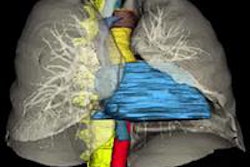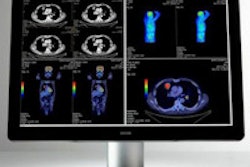Wednesday, December 3 | 3:50 p.m.-4:00 p.m. | SSM19-06 | Room S505AB
In this talk, German researchers will show how semiautomated 3D tumor quantification can facilitate better treatment choices in patients with liver metastases of neuroendocrine tumors.Neuroendocrine cancer patients can be treated using a number of methods depending on their initial tumor load. Because patients with liver metastases of gastroenteropancreatic tumors usually have disseminated liver lesions, semiautomatic lesion detection might offer an objective approach to measure total lesion distribution and yield more individualized therapy regimens, according to the team from University Hospital Heidelberg.
The researchers used software from Fraunhofer MEVIS to successfully perform 3D segmentation of liver lesions in 19 patients; next, they utilized the data for therapy stratification prior to peptide receptor radionuclide therapy.
"By knowing the tumor load and the lesion size distribution, a possible clear mix of different therapeutic emitters might enable a better outcome," senior author and presenter Dr. Frederik Giesel told AuntMinnie.com.




















